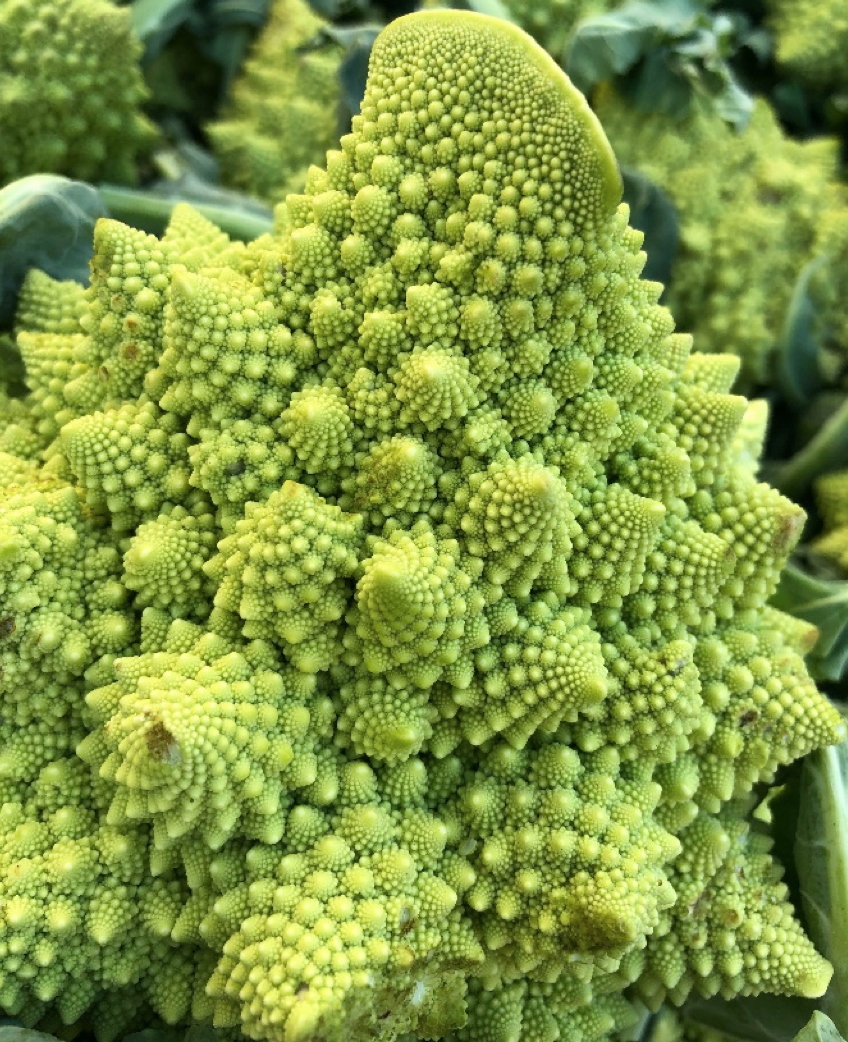The vast majority of the plants that feed us today have been domesticated, i.e. adapted to human needs through artificial selection, which has resulted in changes to their appearance, size or growing area. Cereals, for example, have shorter stems, larger and more numerous grains that cling to the cob. Tomatoes have much larger fruits and watermelons have a red, sweet flesh that is absent in the wild fruit. Cabbages, on the other hand, are the true champions of shape changes; the same species has given rise to green cabbages, kale, kohlrabi, Brussels sprouts, cauliflowers and the surprising romanesco cabbage.
The mystery of the formation of one of the most peculiar plant forms – the Romanesco cauliflower – has been solved by a team of scientists from the IRIG [collaboration]. Thanks to work combining mathematical modelling and plant biology, the scientists were able to determine that cauliflowers, and Romanescos in particular, are in fact buds that are designed to become flowers but which never reach their goal. Instead, they develop into stems, which in turn continue trying to produce flowers. The cauliflower is born from this chain reaction, resulting in a succession of stems upon stems. This study shows that the brief incursion of buds into a flowering state profoundly affects their functioning and allows them, unlike normal stems, to grow without leaves and to multiply almost infinitely. The atypical shape of the Romanesco is explained by the fact that its stems produce buds more and more rapidly (whereas the production rate is constant in other cauliflowers). This acceleration gives each floret a pyramidal appearance, making the fractal aspect of the structure clear.
The study highlights how the selection of mutations in plants during the process of domestication has changed their shape, sometimes drastically, into the fruits and vegetables on our shelves.

Photo of a Romanesco.
© Nathanael Prunet
Collaboration: Scientists from the Laboratoire physiologie cellulaire & végétale (CNRS-CEA-INRAE-Université Grenoble Alpes) and the laboratoire reproduction et développement des plantes (CNRS-ENS Lyon-INRAE) participated. Several foreign universities were also involved in the study: the Polytechnic University of Valencia, Spain; the University of Milan, Italy; the University of California, USA; the University of Nottingham, UK; and the National Autonomous University of Mexico.